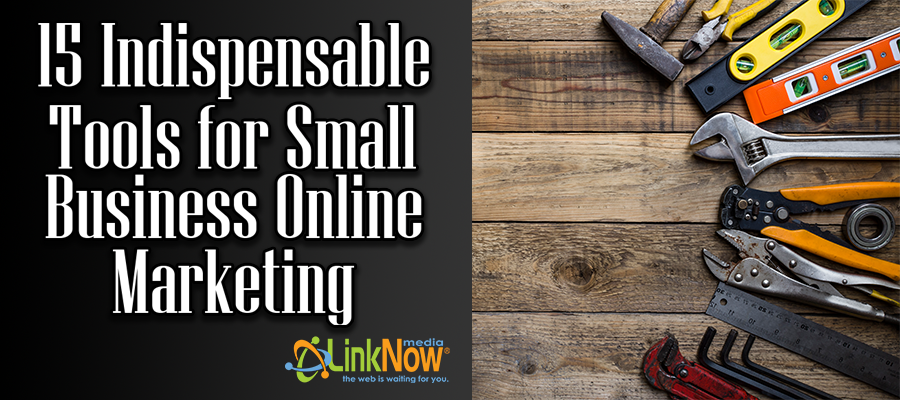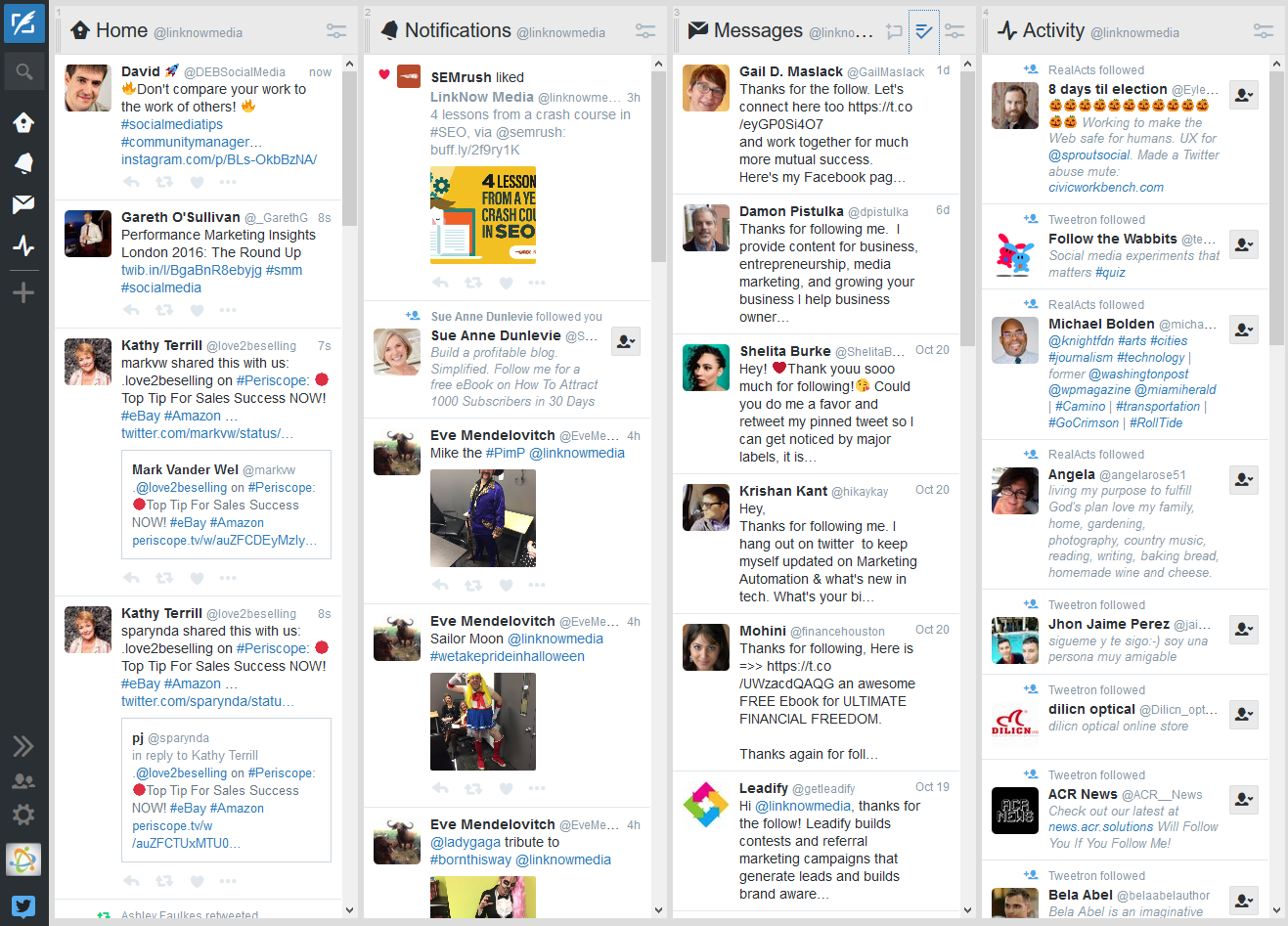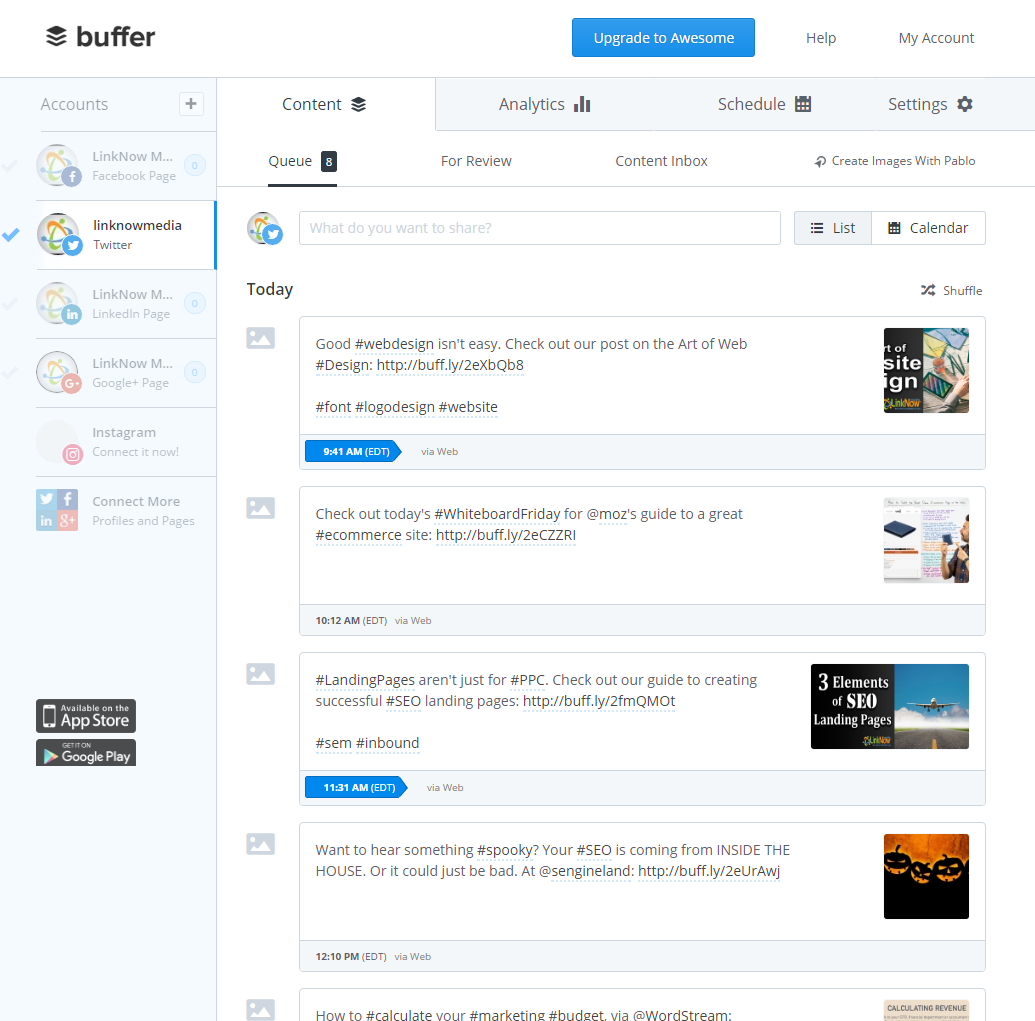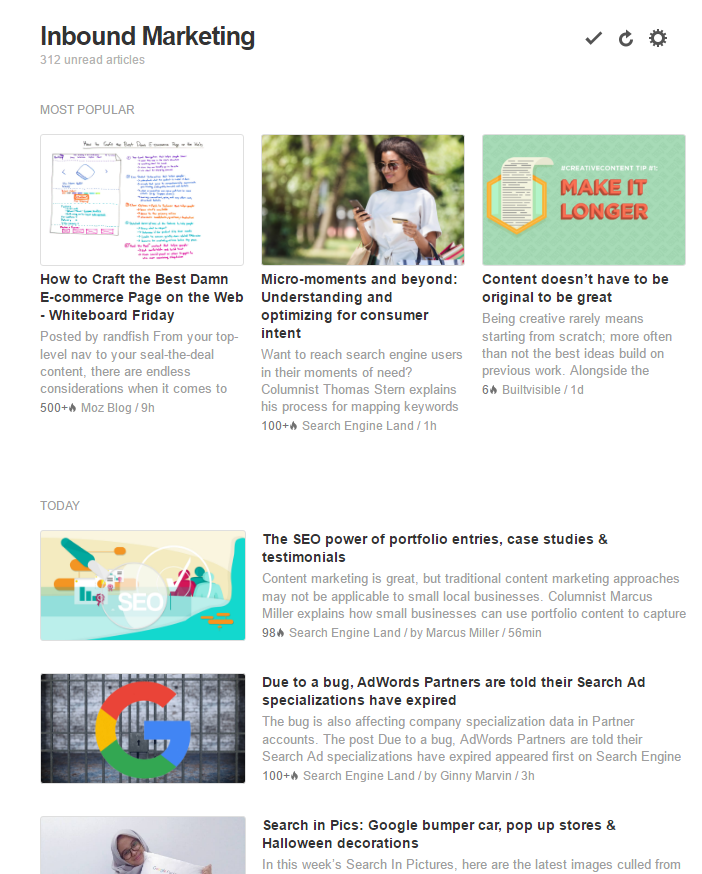
Bring the right tool for the job
Whether you’re talking about a small family business or a multinational company with thousands of employees, online marketing is a critical part of any business plan. While large brands have dedicated marketing departments or outsource their online marketing to digital agencies, small businesses generally need to rely on their own efforts.
For already busy small business owners, needing to think about online marketing can seem like the straw that broke the camel’s back. Fortunately, it doesn't have to be so difficult. Here are 15 tools that are indispensable for any small business that wants to reach their customers online. Some are used to directly contact customers, while others are used to streamline your marketing efforts or simply remove some of the aggravation.
Without further ado, here are the 15 marketing tools you can’t do without if you’re a small business owner who wants to succeed online.
(PS Also, it's Hallowe'en, so forgive the occasional spooky skeleton GIF.)
1. Twitter
Twitter is one of the most versatile social media platforms out there, and the one that consumers run to when they want to contact a business. As a result, if you run any kind of business that deals with the public, you need to be on Twitter.
Twitter is a great place to connect with existing customers, but it’s also a great way to build a following and expose your brand to new people. You can promote your content, share links, and connect with other people and brands in your industry.
2. Tweetdeck
Tweetdeck is a tool that addresses one of Twitter’s big problems – the interface is difficult to use. Tweetdeck allows you to streamline your Twitter experience by creating custom columns that update in real time and show you exactly the information you want to see.
Want to have a column for your notifications? You’ve got it. Want to have a column for every time someone types your company name? No problem. Over the past year, Tweetdeck has probably saved me dozens of hours of clicking through Twitter’s normal interface. If you’re trying to be productive on Twitter, you need to be using Tweetdeck.
3. Facebook, Instagram, Snapchat, etc
It is my firm belief that every business needs to be on Twitter. That’s where the real-time conversation about your brand happens. However, businesses can also get a lot of benefits from being on other social media, though you’ll need to decide which are the most beneficial for your brand.
Facebook is great for sharing content and news about your business. If you write a lot of blog posts or you frequently have specials or promotions you’d like to share with your customers, Facebook is a great way to do that. Similarly, LinkedIn is great for networking with other professionals – if you’re in the B2B industry, this is a great place to be.
Other social media like Instagram, Snapchat, and Pinterest are more about building your brand than directly promoting your business. As social networks that are built around sharing images, businesses that have attractive visuals to share can build a huge following.
You may need to experiment to see which ones work and which ones don’t for your business, but social media can be a major boost to any small business’s profile. You just need to figure out which ones are worth your time.
4. Buffer
Buffer is a tool that lets you manage all your social media accounts in one place. You can connect your Twitter, Facebook, Google+, LinkedIn, and Instagram accounts. You can add your social media posts to Buffer all at once and have them be released on a set schedule, or schedule individual posts to go out at specific times.
For me, Buffer is an enormous time saver, and it’s the biggest part of what allows me to do almost all my social media tasks in half an hour each day.
Buffer is free to use for the basic service, but if you have a larger social media team or more accounts you want to add, they have a premium service that allows you to add more accounts and users and schedule more posts at one time.
5. Feedly
Feedly is a content aggregator that I use to keep track of all the blogs that I think produce great content on a regular basis. If you want to be seen as a good resource online, it’s a good idea to regularly share good content created by other people.
Feedly allows you to create and share lists of different content creators, and shows you everything they produce in one spot. It will also show you the most popular recent posts from the blogs in your list, so you know what other people think is good content.
Feedly is the first site I check every morning when I get to the office. I grab between three and five posts from my favorite content creators and use Buffer to schedule them to go out over our social media accounts throughout the day. Again, this can save you tons of time, since you no longer have to go through each site one by one.
6. IFTTT
IFTTT is another one of these great timesaving tools. An abbreviation for “If This Then That,” IFTTT allows you to create “recipes” that automate most of the tasks that we do online.
IFTTT recipes are basically just an automated actions that follows some kind of trigger that you set up. For example, you could have a recipe that says, “If I upload a picture to Instagram, automatically post it on Facebook and Twitter.” Or you could have a recipe that says, “If I like a tweet on Twitter, add it to my Buffer schedule.” The possibilities are almost limitless, and you’ll be amazed by the timesaving recipes you can come up with after using it for a while.
7. Bitly
URL shorteners became popular on Twitter because URLs can quickly eat up a lot of your allocated 140 characters. Bitly was one of the first of these, and even though Twitter and other networks now automatically shorten links, Bitly is still a great service.
The main reason to take the extra step to use Bitly to shorten links is that Bitly gives you all kinds of data about who’s clicking your links and where they’re finding them. If you use the same Bitly link everywhere you share your content, you can get a very accurate picture of where your traffic is coming from and which of your posts are most effective for bringing in readers/customers.
8. Canva
Research has shown that great images can be the key to getting people to share your content. But if you’re not a graphic designer (I’m definitely not), you may be at a loss for how to create images.
Well, Canva is the answer for a huge number of small business owners. It lets you create professional-looking images without messing around with a complex program like Photoshop. And unlike Photoshop, it’s free to use all the basic features.
9. SlideShare
Not everyone likes to read blog posts. Fortunately, there’s SlideShare! SlideShare is a service owned by LinkedIn that allows you to upload presentations in the form of slides. If you’ve ever used PowerPoint, you’re familiar with the format, and they actually allow you to upload PowerPoint files.
The beauty of SlideShare is that it allows you to repurpose your existing content for a new audience. Many people who won’t take the time to sit down and read through a long blog post will still value the information if they can get it in another format. SlideShare lets you recreate your content as a visually appealing presentation that can catch new eyes. You can see how we turned one of our blog posts into a SlideShare presentation here.
10. LastPass
Sick of having your IT person tell you that using your birthday for every password isn’t secure? When you’re managing your company’s social media accounts, the last thing you want is some troll to take over your account and start insulting your customers.
LastPass will store all the passwords for any website that you use, and secures them with a master password. That means you only have to remember one password, and all your other passwords can be a secure mess of letters and numbers, since you’ll never have to remember them.
11. Compfight
Compfight sounds dangerous, but it’s actually just a tool for sourcing free images. When you’re looking for photos for a blog post, it can be tempting to just grab something from Google Image Search, but that’s a sure way to get yourself in trouble with the copyright holder.
Compfight is simply a tool that searches Flickr for photos that are free to use. Stick with these, and you’ll never have to worry about a copyright takedown notice.
12. ManageFlitter
ManageFlitter is a popular tool that lets you quickly manage your Twitter followers. A very popular strategy for finding new Twitter followers is to simply follow lots of people in your industry, because many of them will follow you back.
However, you don’t want to be following too many accounts that aren’t following you for two reasons. The first is that Twitter will eventually limit how many people you can follow, and they base the total number of accounts you can follow on the ratio between the number of accounts you follow and the number of accounts that follow you.
The second reason is that other users will see your ratio and judge you for it. Ideally, you want to be following a lot fewer people than are following you, but you should at least try to keep the numbers close together.
ManageFlitter’s primary feature is that it allows you to quickly and easily unfollow all the people who aren’t following you back. It’s way easier than hunting through all the people you’re following to pick them out by hand. A few clicks and you can get out from under the account limit and start following people again.
13. MailChimp
Email marketing is still a huge part of doing business online, and MailChimp is one of the most popular tools to manage email campaigns. MailChimp makes it easy to create and manage email campaigns, and they give you reports and data insights to let you know how you’re doing.
While you do need to pay for their higher tiers of service, their basic (free) plan lets you manage an email list of up to 2,000 subscribers and up to 12,000 emails/month – which should be more than enough for any small business. If you find yourself needing more than that, you’ll be managing such massive email campaigns that you won’t mind spending a few bucks to make it easier.
14. AdWords
Google’s AdWords is one of the most straightforward and cost effective ways for small businesses to drive traffic to their websites. You can read more about it here, but the basic idea is that you create a short text ad that will be displayed in Google’s search results if someone searches for keywords you choose.
The best part is that, by default, AdWords campaigns are pay-per-click, which means you only pay when someone actually clicks on your ad. This gives you the freedom to test different ideas and run experiments until you find the ads that work perfectly for your business.
15. Google Analytics
Google Analytics is an incredibly powerful free data tool that it takes extensive training to use to its fullest capacity, but even total novices can pull very valuable information from it.
Once it’s installed, Google Analytics allows you to quickly access a huge amount of data about the visitors that are coming to your website. You can track the time visitors spend on your site, where they’re arriving from, your bounce rate, and so much more. If you want to make sure you’re making informed decisions about your online marketing, you need to use Google Analytics.
There are so many more small business online marketing tools
This isn’t meant to be a definitive list of all the online marketing tools out there – these are just the 15 tools that it would be difficult or impossible to market your business without.
Are there any tools you like to use that you think other small business owners could benefit from? Let us know in the comments, or drop us a line on Twitter! And happy Hallowe'en!










These are all great tools! Excellent post Lauchlin!